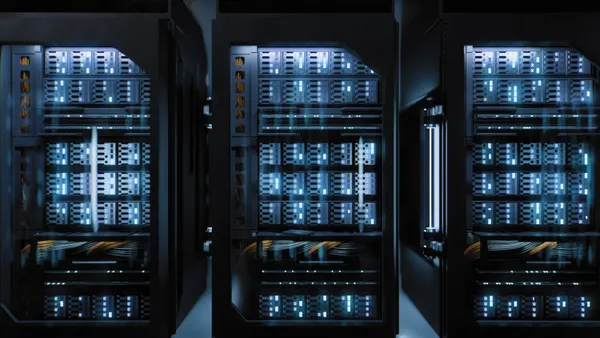Dive Brief:
- Grid Interconnection processes for new energy resources in many states have failed to keep pace with rising interest in, and incentives for, solar and storage resources, researchers said in a report released this month. “As a result, interconnection applications are increasing while interconnection authorizations lag behind,” it said.
- Applied Economics Clinic, an Arlington, Massachusetts, consulting group, said in the paper, “The Interconnection Bottleneck: Why Most Energy Storage Projects Never Get Built,” that policymakers need to establish interconnection processes to “take a systemic view” of applications rather than examine interconnection applications and grid upgrades in isolation.
- The paper, prepared for Clean Energy Group, a nonprofit group offering technical expertise and analysis, said utilities, state officials, grid operators and the Federal Energy Regulatory Commission should iterate interconnection processes to “build in regular improvements, examine effectiveness, and coordinate stakeholders to tackle ad hoc coordination problems.”
Dive Insight:
Researchers made several recommendations and warned multiple fixes to interconnection processes would be needed. “No single solution is a silver bullet,” they said.
The paper recommended an end to the model of cost allocation for grid upgrades known as cost causation by spreading distribution system upgrade costs over a broader set of stakeholders than the projects applying for interconnection.
Another suggestion is to study proposed storage resources in a way that reflects how the resources would reasonably be expected to operate once interconnected.
“Nationally, almost all of the projects waiting in interconnection queues are for solar, wind and storage projects,” Todd Olinsky-Paul, senior project director at Clean Energy Group, said in releasing the report. “The wait to interconnect is so long that many projects drop out and never end up being built.”
In PJM Interconnection, for example, the interconnection costs of storage are $335/kW, solar is $253/kW, onshore wind is $135/kW and offshore wind is $385/kW, the report said. For natural gas, interconnection costs are $24/kW.
In part, expanding interconnection queues are the result of states’ increased commitment to decarbonization and increased renewable energy deployment, the report said.
The report addressed transmission- and distribution-level interconnection barriers. Its recommendations focused on what states should consider to reduce distribution-level barriers within their regulatory jurisdiction.
The report uses Massachusetts as a case study, but the findings are “broadly applicable” across the U.S., it said.
In Massachusetts, the annual proposed capacity of solar, storage and hybrid solar-storage resources increased by a factor of eight between 2009 and 2022, “with an even sharper spike in 2018,” the report said. But the annual amount of authorized capacity is no higher in 2022 than the previous decade.
The continuing trend of proposed solar and storage capacity outpacing authorized capacity suggests that the number of applications waiting for interconnection or exiting interconnection processes is rising each year, the report said.
Nationally, the transmission queue has quadrupled in size and is now about 63% larger than installed capacity, according to the report. By comparison, in 2010 the U.S. transmission interconnection queue was half the size of installed capacity.
The dramatic growth of the transmission queue has predominantly resulted from increased interconnection requests for solar, storage and hybrid solar storage projects, the report said.
Capacity of energy projects in U.S. interconnection queues grew 40% year-over-year in 2022, with more than 1,350 GW of generation and 680 GW of storage waiting for approval to connect as of the end of 2022, according to a report from the Lawrence Berkeley National Laboratory in April.
Queue lengths are expected to grow as the Inflation Reduction Act spurs even greater interest in renewable energy among developers, it said.















